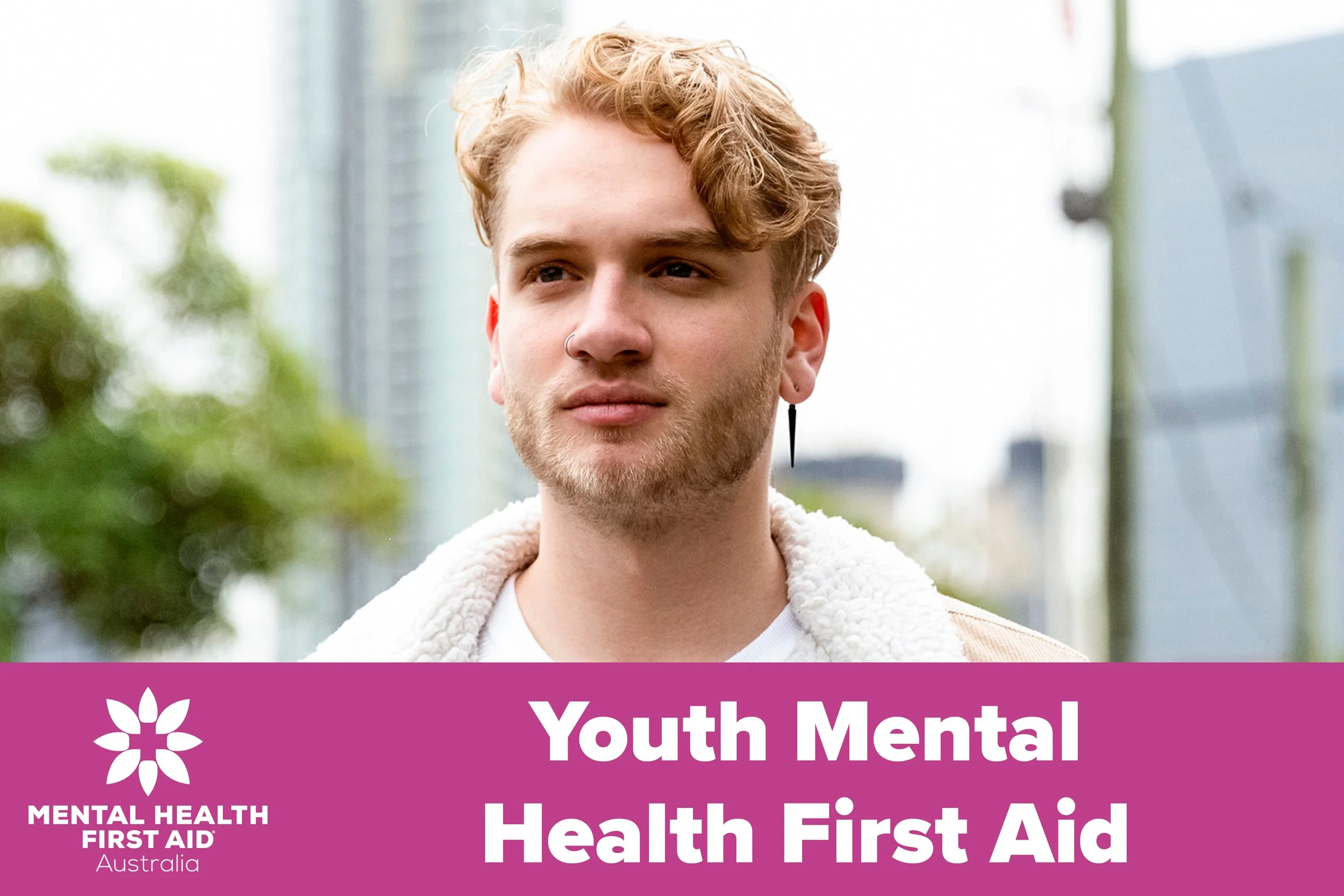Unmasking Anxiety: Supporting Social Connection in Neurodivergent Children and Adolescents
Anxiety and covering up differences to fit in can be exhausting for young people
For many children and adolescents, the desire to “fit in” can be both a motivator and a source of distress. Social connection is vital to wellbeing, yet for young people who are neurodivergent, especially those experiencing anxiety, this connection can feel out of reach. Behind the smiles and small talk, some are masking deep discomfort, fear of rejection, or a sense of not belonging. Early intervention, including Mental Health First Aid conversations, can be a powerful tool to help young people unmask safely and access the support they need.
What Is Masking and Why Do Young People Do It?
Masking refers to the conscious or unconscious effort to hide one’s true feelings, behaviours, or traits to appear “typical” or socially acceptable. Neurodivergent children, such as those with autism or ADHD, often mask to avoid stigma or bullying, to meet social expectations, or simply to survive in environments not designed for their needs (Emerging Minds, 2023a).
These behaviours may help children navigate social situations temporarily, but they often come at a cost. Masking can lead to increased anxiety, exhaustion, and a diminished sense of self-worth. Over time, it may contribute to depression, social withdrawal, and trauma (Orygen, 2022).
The Link Between Neurodiversity, Anxiety, and Social Connection
An estimated 3.2% of Australian children are autistic (Australian Autism Alliance), and between 6-10% of children and adolescents are diagnosed with ADHD (Australian Evidence-Based Clinical Practice ADHD Guidelines). These children often experience heightened anxiety, especially in social settings. They may fear saying the wrong thing, being misunderstood, or standing out. In response, they might:
• Avoid eye contact or group activities
• Mimic peers’ behaviours to blend in
• Suppress stimming or sensory needs
• Overcompensate with perfectionism or people-pleasing
Emerging Minds (2023b) highlights that these coping strategies, while adaptive in the short term, can erode mental health over time.
Young people often adapt to fit in with different people and social situations, often at the expense of their mental health
What Does Masking Look Like in Different Contexts?
At school: A student may appear compliant and quiet but feel overwhelmed by group work or sensory stimuli. Teachers might miss signs of distress if the student is academically capable or well-behaved.
At home: Parents may notice meltdowns, shutdowns, or fatigue after school. These are signs that their child has been “holding it together” all day.
In peer groups: Young people might laugh along or agree with others to avoid conflict, even when it contradicts their values or needs.
Understanding these behaviours as signs of masking, rather than signs of defiance or disinterest, is key to offering compassionate support (Emerging Minds, 2023a).
How Mental Health First Aid Conversations Can Help
Mental Health First Aid (MHFA) offers a framework for recognising signs of distress, initiating supportive conversations, and connecting young people to appropriate help. For children and adolescents, MHFA can:
• Create safe spaces to talk about emotions without judgment
• Validate neurodivergent thinking and experiences and reduce stigma
• Encourage early help-seeking before issues escalate
• Strengthen relationships with trusted adults and peers
Orygen (2022) emphasises the importance of early, empathetic intervention to prevent long-term impacts. MHFA-trained educators, parents, and youth workers can play a pivotal role in this process.
Youth Mental Health First Aid is a 2-day course that gives you skills and knowledge to intervene and support a young person to connect with support and information.
A Neurodivergent-Affirming Approach: What It Looks Like
Rather than encouraging children to “act normal,” neurodivergent-affirming care celebrates authenticity and adapts environments to meet diverse needs. This includes:
• Using inclusive language and avoiding labels like “difficult” or “attention-seeking”
• Offering sensory-friendly spaces and flexible routines
• Supporting self-regulation strategies like movement breaks or quiet time
• Encouraging self-expression through art, journaling, or peer support
As Emerging Minds (2023c) notes, affirming approaches improve self-esteem, reduce anxiety, and foster stronger social bonds.
Connection Over Conformity
When we prioritise connection over conformity, we empower young people to be themselves, and to seek help when they need it. Masking may hide anxiety, but it also hides potential. Through early intervention, neurodivergent-affirming care, and Mental Health First Aid conversations, we can help children and adolescents build genuine relationships, access support, and thrive.
References
Australian Autism Alliance, Snapshot of Autism, https://australianautismalliance.org.au/autism/autism-snapshot/
Australian Evidence-Based Clinical Practice ADHD Guidelines, https://adhdguideline.aadpa.com.au/about/about-adhd/
Emerging Minds. (2023b). Social anxiety in children and teens. https://emergingminds.com.au/resources/social-anxiety-children/
Emerging Minds. (2023c). A neurodivergent-affirming approach to children’s mental health [Podcast]. https://emergingminds.com.au/podcasts/a-neurodivergent-affirming-approach-to-childrens-mental-health/
Mental Health First Aid International, Courses, Adults Supporting Young People, https://www.mhfa.com.au/our-courses/adults-supporting-young-people
Orygen. (2022). Dissociation and trauma in young people: Fact sheet. https://www.orygen.org.au/Training/Resources/Trauma/Fact-sheets/Dissociation-trauma/Orygen_Dissociation_and_trauma_in_young_people_fac


